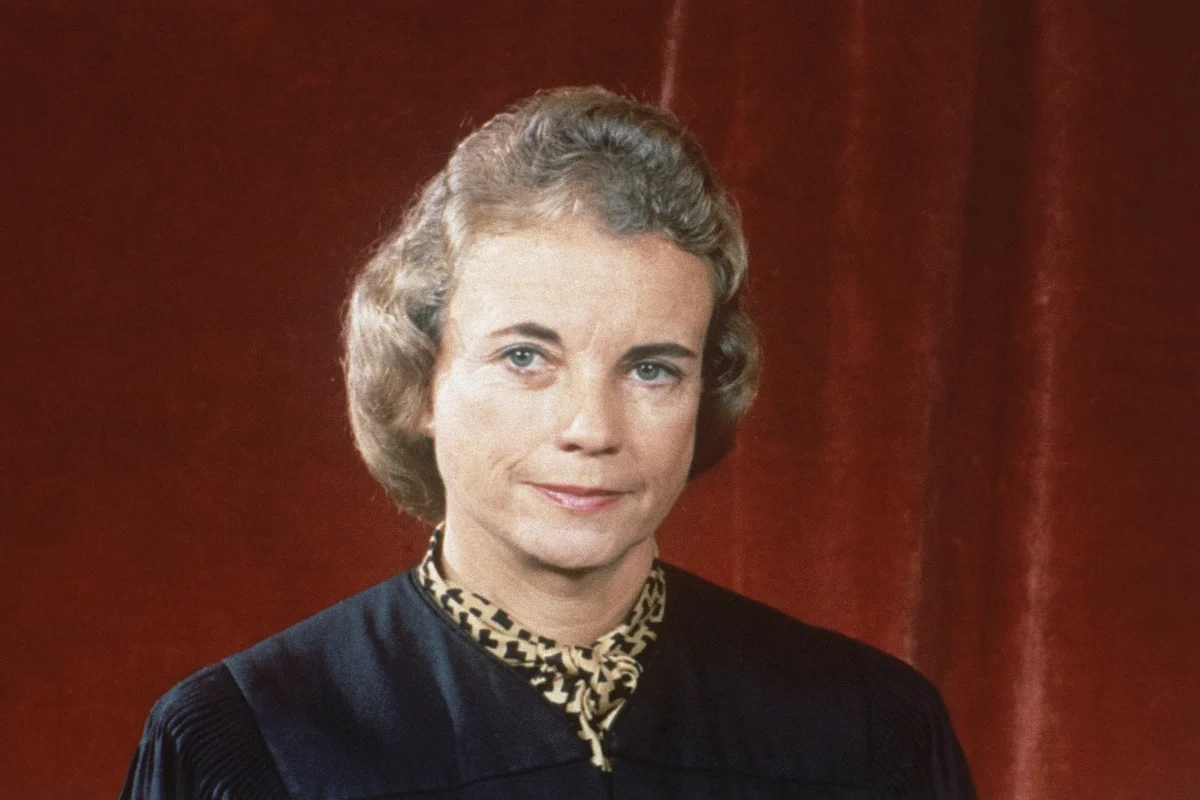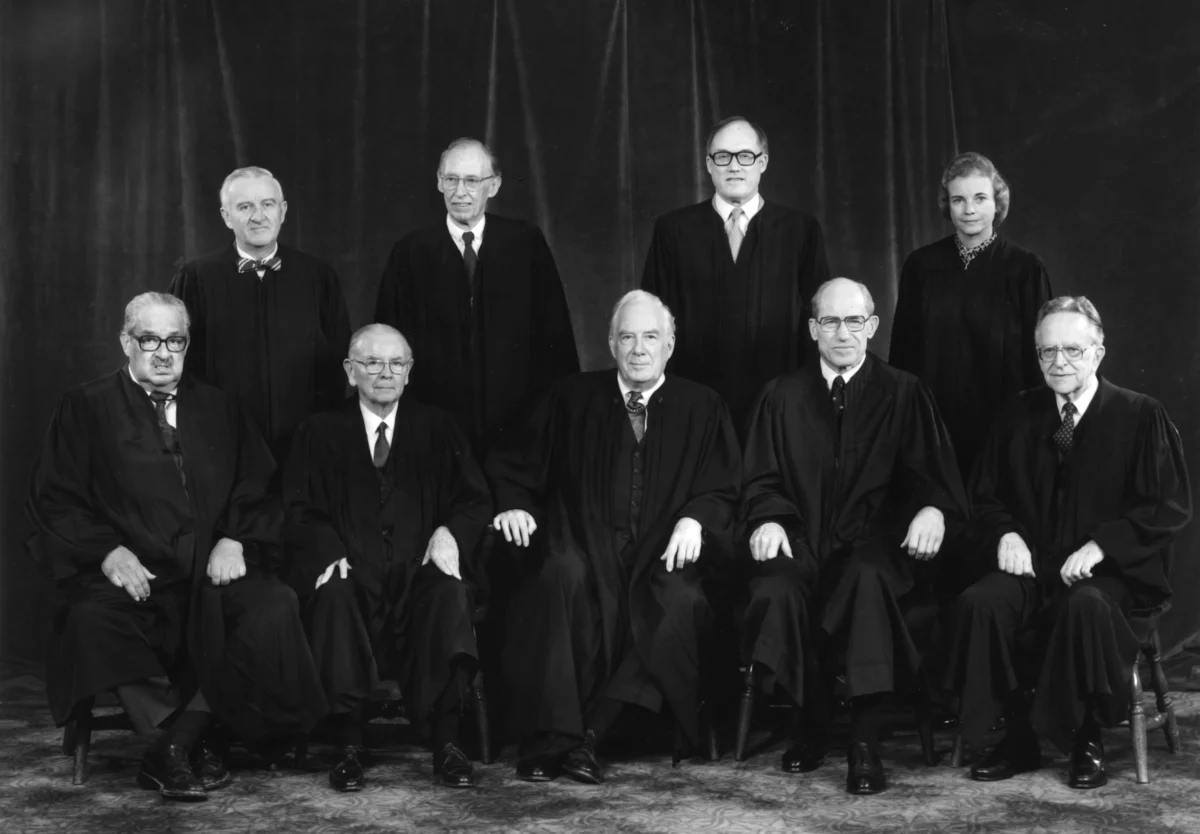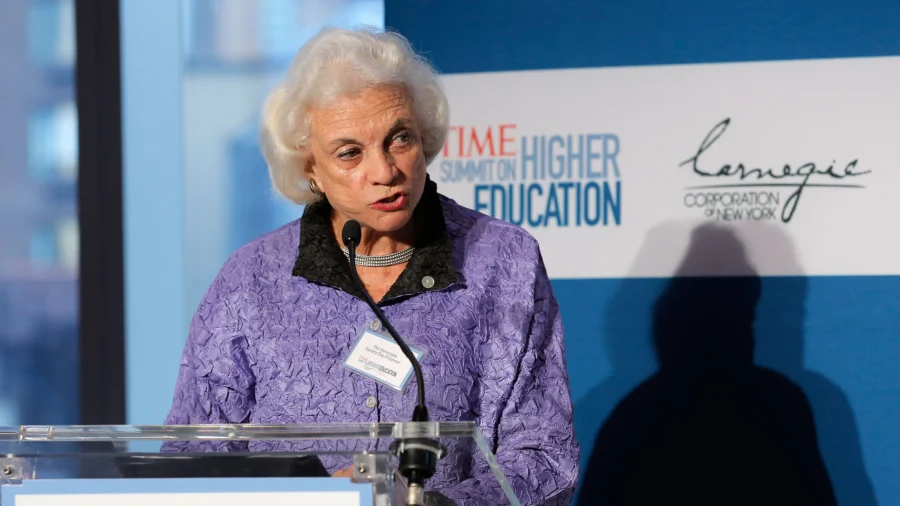Retired Supreme Court Justice Sandra Day O’Connor has died, the court said on Dec. 1.
Justice O’Connor was 93.
The retired justice died in Arizona from “complications related to advanced dementia, probably Alzheimer’s, and a respiratory illness,” the Supreme Court said in a statement.
Justice O’Connor had said in 2018 she was diagnosed with “the beginning stages of dementia, probably Alzheimer’s disease.”
Appointed by President Ronald Reagan in 1981, she was the first women to serve on the nation’s top court. She served until 2006.
Justice O’Connor is survived by her three sons, six grandchildren, and her brother. Her husband, John O’Connor, died in 2009.
Chief Supreme Court Justice John Roberts said in a statement that Justice O’Connor “blazed an historic trail as our nation’s first female justice.”
He added: “She met that challenge with undaunted determination, indisputable ability, and engaging candor. We at the Supreme Court mourn the loss of a beloved colleague, a fiercely independent defender of the rule of law, and an eloquent advocate for civics education. And we celebrate her enduring legacy as a true public servant and patriot.”

Major Rulings
On the bench, Justice O’Connor’s influence could best be seen, and her legal thinking most closely scrutinized, in the court’s rulings on abortion. Justice O’Connor balked at letting states outlaw most abortions, refusing in 1989 to join four other justices who were ready to reverse the landmark 1973 Roe v. Wade decision that said women have a constitutional right to abortion.
The Roe decision claimed that a right to abortion was found in the U.S. Constitution.
Then, in 1992, Justice O’Connor helped forge and lead a five-justice majority that reaffirmed the core holding of the 1973 ruling. “Some of us as individuals find abortion offensive to our most basic principles of morality, but that can’t control our decision,” Justice O’Connor said in court, reading a summary of the decision in Planned Parenthood v. Casey. “Our obligation is to define the liberty of all, not to mandate our own moral code.”
President Reagan had written in his diary about the criticism he faced from the right for appointing Justice O’Connor, with some activists describing her as “pro-abortion.”
“She declares abortion is personally repugnant to her. I think she’ll make a good justice,” he wrote.
Roe was struck down in 2022 by a majority of justices, who said it lacked support in the Constitution, American law, or common law. Justice Samuel Alito, appointed under President George W. Bush to fill the seat left vacant by Justice O’Connor, authored the majority opinion.
In 2000, Justice O’Connor was part of the 5–4 majority that effectively resolved the disputed 2000 presidential election in favor of President Bush over Democrat Al Gore. Justice O’Connor was the swing vote in a number of opinions, regularly joining fellow justices appointed by Republicans but sometimes siding with justices appointed by Democrats.
Justice O’Connor was regarded with great fondness by many of her colleagues. When she retired, Justice Clarence Thomas called her “an outstanding colleague, civil in dissent and gracious when in the majority.”
After retirement, Justice Connor received the Presidential Medal of Freedom from President Barack Obama.

Early Life
Justice O’Connor was born in El Paso, Texas, in 1930. She was the granddaughter of a pioneer who traveled west from Vermont and founded the family ranch some three decades before Arizona became a state. She grew up in the remote outback, learning as a child to to ride horses, round up cattle, and drive trucks and tractors.
“I didn’t do all the things the boys did,” she said in a 1981 Time magazine interview, “but I fixed windmills and repaired fences.”
She was married in 1952. She received a Bachelor’s of Arts and a Bachelor of Laws from Stanford University before working as a prosecutor in California and a civilian attorney for the Quartermaster Department in Germany after her husband was drafted.
She practiced law for several years, was Arizona’s assistant attorney general, spent time as a state senator, and was a judge in Arizona before becoming a Supreme Court justice.
After retiring from the court, she founded iCivics, a nonprofit described as working “to ensure every student in America receives a quality and engaging civic education and graduates from high school well prepared and enthusiastic for citizenship.”
Parts of her life were reflected in the five books she wrote, including Growing Up on a Cattle Ranch in the American Southwest.
No funeral plans have been released yet.
The Associated Press contributed to this report.
From The Epoch Times

